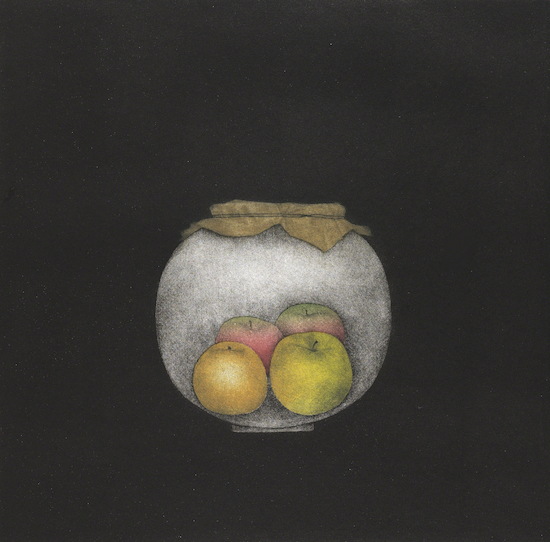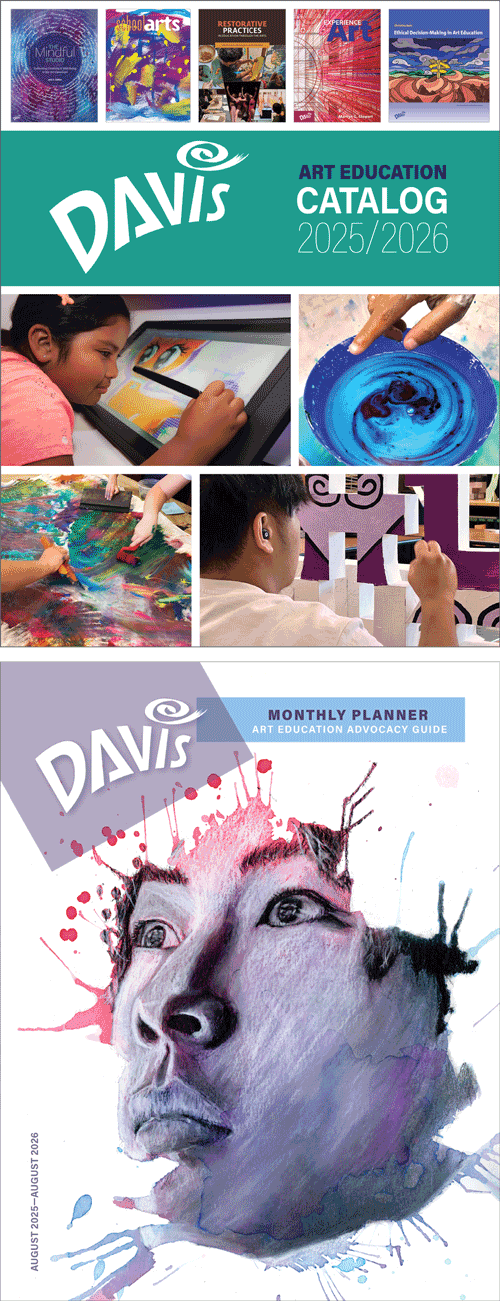National Apple Day: Art by Yokoi Tomoe
There are about 7000 varieties of apple in the world. Apples have been a favorite element of still life since still life became an accepted stand-alone subject matter in Western art. The unique printmaking art of Tomoe Yokoi is an example of Japanese aesthetics combined with Western contemporary printmaking techniques.
National Apple Day, 21 October: art by Yokoi Tomoe (born 1943 Japan)
 |
| Yokoi Tomoe, Apples, 1979, mezzotint on paper, 29.5 x 29.8 cm Brooklyn Museum, © 2025 Tomoe Yokoi (BMA-4621) |
In 1971 Yokoi moved to New York, having perfected the printing method of mezzotint. She expanded the range of the mezzotint to multi-plate images with subtle nuances of color. This work is typical of Yokoi's still life prints -- realistically rendered objects isolated on a dark, blank background. She unites the Japanese reverence for nature with the Western still life tradition.
Much like Dutch and Spanish Baroque still life painting, Yokoi isolates her forms in a way that renders them almost meditative in spirit. At the same time, she reflects something of Hayter's Surrealist bent with the eerie suspension of the subject in a dream-like void.
Background
The results of World War II (1939-1945) had a devastating result on Japanese culture. With a secularized/militarized emperor and a questioning of traditional values that had led to the disastrous war, many Japanese artists uprooted artistic traditions in the resurrected postwar economy. Printmaking ascended as a vital medium because of the value on mass-production.
The new printmaking did not have full impact until the 1950s. The generation after Hiroshima found a treasure trove of new technologies for printing outside of the traditional woodblock printing, from mezzotints to silkscreen. New processes were enthusiastically absorbed. New photo print methods were also explored. Contemporary Japanese printmaking is typified by both technical and stylistic ingenuity.
Tomoe Yokoi was born in Nagoya. She studied at Bunka Gakuin Tokyo College of Art until 1964. There she learned traditional techniques and subject matter. Everyday images of fruit, musical instruments and flowers would become the staple of her prints. In 1964 she moved to Paris to study at Stanley Hayter (1901-1988 British) at his Atelier 17. Hayter was a Surrealist and subsequently Abstract Expressionist, both a painter and printmaker. Under Hayter Yokoi honed her intaglio printing techniques.
Correlation to Davis program: Davis Collections -- Japanese Art

Comments